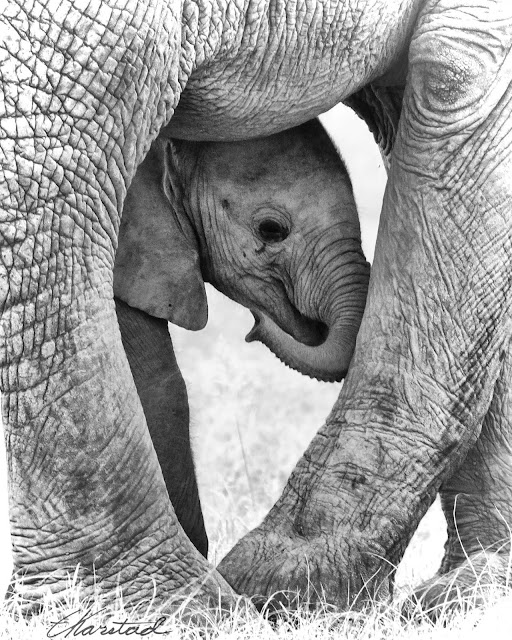View from the top; TeddyBear Island, lake Baringo. The Island's website is HERE.
An almost-daily photo blog from Kenya By Elsen Karstad, resident in Kenya, East Africa. Cameras: Nikon D780 & Nikon D850 Lenses: Nikon 14-24 F2.8, Nikon 50 F2.8, Sigma 28-70 F2.8, Sigma 105 F2.8 Macro, Nikon 70-200 F2.8 VRII, Nikon 200-500, Nikon 600 VR F4.0 Enquiries on photo use or prints, email elknbi@gmail.com
Tuesday, June 30, 2015
Monday, June 29, 2015
Friday, June 26, 2015
Concealed Leopard, Masai Mara Kenya
We very nearly drove underneath this concealed leopard in the Mara
Triangle. The leopard's skill in blending into what appear to be scrawny
and sparse tree canopies never ceases to impress. When asked 'have you
seen any leopard?' a perfectly correct reply is 'no, but several have
seen us'.
Thursday, June 25, 2015
Wednesday, June 24, 2015
Tuesday, June 23, 2015
Elephant Family Unit, Amboseli Kenya
Bwana is in attendance. Normally the elephant 'family unit' doesn't
include mature males, but in this case the young female to the left of
the bull is in heat, as evidenced here by her scuffed side.
Monday, June 22, 2015
Goliath Heron, Kenya
Goliath Heron, Lake Baringo. Wingspan can be up to 7.5 ft (2.3m). More on this large bird HERE.
Friday, June 19, 2015
Mara Storm
Typical afternoon rainy season weather over the Mara. Long grass now
await the wildebeest, who are currently hovering along the Mara's southern
border with the Serengeti.
Thursday, June 18, 2015
Silver-Backed Jackal, Amboseli Kenya
The Silver-Backed Jackal fits much the same niche as the Coyote; feeding
on carrion, leftovers, small mammals, birds and reptiles.
Wednesday, June 17, 2015
Tuesday, June 16, 2015
Female Elephant with Young, Amboseli Kenya
Young elephants stay very close to their mothers. Rescued orphans are
usually sunburnt after spending time out of mother's shadow.
Wednesday, June 10, 2015
Elephant Dust Bath
This Male is performing a display 'dust bath' during a semi-aggressive
encounter with a rival. A receptive young female was not far off.
Tuesday, June 9, 2015
Monday, June 8, 2015
Amboseli Elephants
Amboseli Elephants. The Mature female is 'dust bathing', which helps remove or discourage insects, but with elephants may also be a method of scent-marking territory by broadcasting oils from the musth glands located between the eye and the ear. This dusting behaviour is particularly common during aggressive encounters between males.
Labels:
Africa,
Amboseli park,
dust bath,
Elephant,
elephant behaviour,
family unit,
Kenya,
Pic-a-day Kenya,
scent,
scent marking,
territorial,
wildlife behaviour,
www.kenyapics.com
Friday, June 5, 2015
Immature Bataleur Eagle, Masai Mara Kenya
Mature Bateleur Eagles are impressive birds; large and fierce-looking
with graphic black and reddish brown colours. The young? Well, they are
large and always hungry....
Labels:
Africa,
african birds,
Bateleur,
eagle,
Elsen Karstad,
Kenya,
Mara Conservancy,
Masai Mara,
Pic-a-day Kenya,
Wildlife Photography,
www.kenyapics.com,
young,
young bataleur eagle
Thursday, June 4, 2015
Wednesday, June 3, 2015
Wildebeest, Masai Mara Kenya
Very much looking forward to the annual wildebeest migration- it should
start early August, give or take a month, with the herds charging back
and forth across the Mara for 6 to 8 weeks. This photo was taken last
year.
Labels:
2015 wildebeest migration,
Africa,
Elsen Karstad,
Kenya,
Mara Conservancy,
Masai Mara,
wildebeest,
Wildlife Photography,
www.kenyapics.com
Location:
Maasai Mara National Reserve, Kenya
Tuesday, June 2, 2015
Gerenuk, Amboseli Kenya
A browser adapted for browsing at levels just above competitive plains game like impala, the Gerenuk gains additional height by standing on it's hind legs and pulling branches down to feed using it's long forelimbs.
Monday, June 1, 2015
Subscribe to:
Posts (Atom)


















